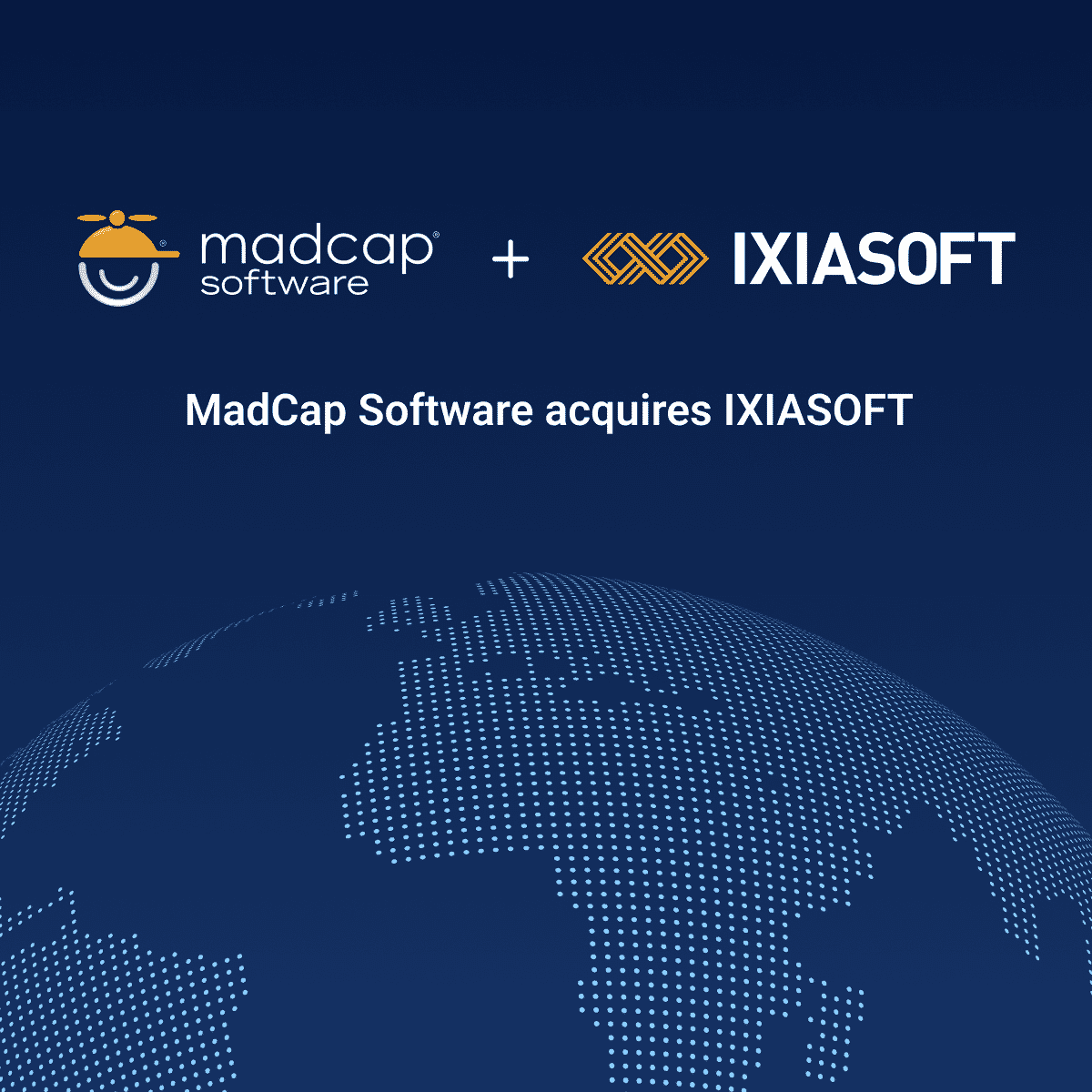In a world where technology never stands still, recent industry mergers are paving the way for a revolution in content management. The acquisition of IXIASOFT by MadCap Software is one such defining moment. With a portfolio that now boasts the likes of MadCap Flare, MadCap Central, and the newly integrated MadCap IXIA CCMS, MadCap Software is poised to provide a holistic suite that not only addresses the immediate needs of organizations but grows and evolves with them. Their unique offering ensures that migration from one tool to another is smooth, efficient, and virtually effort-free.
In the intricate world of pharmaceutical regulations, there is an ever-present emphasis on the need for precise, timely, and compliant documentation. The swift development and approval of COVID-19 vaccines underscored the indispensable role of an effective content strategy. It became evident how a content strategy geared towards reuse and efficient management can significantly reduce go-to-market timelines. In such high-stakes environments, leveraging a pharmaceutical learning content management system can be transformative. These systems ensure that vital content is managed with precision, supporting regulatory compliance and accelerating product development cycles. With the combined power of DITA XML and MadCap IXIA CCMS, the pharma documentation landscape is poised for transformation.

Pharmaceuticals face many challenges in documentation and labeling compliance
- Keeping up with the ever-changing regional and global regulatory requirements and guidelines
- Ensuring consistency and accuracy of information across multiple documents and formats, such as product labels, patient information leaflets, pack inserts, web portals, etc
- Managing the creation, review, approval, and maintenance of the company core data sheet (CCDS), which serves as the reference document for national labels
- Reducing the time and cost of document production and translation, while maintaining quality and safety standards
- Enhancing the user experience and satisfaction of end-users, including patients, prescribers, and regulators
These challenges can have serious consequences for pharmaceutical companies, such as:
- Delays in product launch or market access
- Increased risk of errors, omissions, or inconsistencies in product information
- Potential legal liabilities or regulatory actions due to non-compliance or adverse events
- Loss of trust or reputation among customers and stakeholders
Progress lies in employing “new” technology such as DITA XML
Progress lies in using new technologies like XML databases to maintain the Company Core Data Sheet (CCDS). The CCDS is an internal document prepared by the marketing authorization holder (MAH) or pharmaceutical company that contains information about the safety and efficacy of a drug product. In other words, the CCDS is a data container (or database) that stores the label's text in a clear and organized way. It also allows storing extra information (attributes) for each part of the label (e.g. pharmaceutical form, route of administration, core/non-core information).
The system tracks the medical and regulatory assessments for all the information the MAH collects and combines. The national labels are based on the CCDS and follow the national rules for structure and wording.
By employing the structured and semantic nature of DITA XML, stored in a CCMS, the MAH or pharmaceutical company can achieve several benefits, such as:
- Simplifying the creation and maintenance of the CCDS by using reusable and modular content components that can be easily updated and managed
- Enhancing the quality and consistency of the CCDS by applying metadata, attributes, and validation rules that ensure compliance with the International Council for Harmonization of Technical Requirements for Pharmaceuticals for Human Use (ICH) and Common Technical Document (CTD) standards
- Automating the generation and publication of the labeling by using dynamic output formats, filters, and templates that adapt to the specific requirements and guidelines of each market and region
- Reducing the time and cost of localization and translation by using single-sourcing, terminology management, and language support features that facilitate multilingual content delivery
But DITA XML alone is not enough. To fully leverage the benefits of DITA XML, you also need a robust and reliable component content management system (CCMS) that can store, manage, and publish your DITA XML content. And that’s where IXIA CCMS comes in.
IXIA CCMS is an enterprise-class software solution that offers a complete technical documentation platform from A to Z. It is designed to support the specific needs and challenges of the pharmaceutical industry, such as:
- Compliance with regulatory standards and guidelines, such as ICH Q7A, FDA 21 CFR Part 11, EMA eCTD Module 1.3.1.4
- Integration with other systems and tools, such as ERP, CRM, LIMS, CMS
- Collaboration and workflow management for cross-functional teams, including SMEs, information architects, reviewers, localization managers
- Dynamic release management and version control for managing multiple product variants and versions
- Content reuse and single sourcing for reducing duplication and inconsistency of content
- Content personalization and optimization for enhancing user experience and satisfaction
By using IXIA CCMS in conjunction with DITA XML, you can achieve the following:
Advantages | Description |
|---|---|
Improved quality | You can ensure that your content is accurate, consistent, compliant, and up-to-date across all documents and formats. |
Reduced cost | You can save time and money by reusing existing content, automating content production and translation processes, and eliminating manual tasks. |
Increased efficiency | You can streamline your content workflow and collaboration using a centralized repository, a user-friendly interface, and a flexible system architecture. |
Enhanced flexibility | You can adapt your content to different markets and audiences using metadata-driven output generation, dynamic filtering, and conditional processing. |
Increased customer satisfaction | You can provide your end-users with relevant, personalized, engaging content that meets their needs and expectations. |
Content Components as the New Building Blocks of Submissions
The Paradigm Shift
Historically, industry professionals viewed their content in terms of comprehensive documents and exhaustive reports. However, each document essentially encapsulates a set of organized, interrelated information components. By pivoting our mindset and recognizing content as modular building blocks, we can adeptly construct tailored documents or other essential deliverables. This modular strategy ensures that while full-fledged documents can still be assembled when required, there's no undue waiting period just to share valuable information with internal teams, external collaborators, or authoritative bodies.

The Evolution During COVID-19
The frenetic pace of COVID-19 vaccine development became a testament to the transformative power of a component-based approach. Reusable content components emerged as the unsung heroes, accelerating the documentation process to unprecedented speeds. Pharmaceutical giants tapped into the manifold advantages of these components, especially when they swiftly presented evidence of prior approvals in new clinical submissions. The dated method of copying and transferring data from one Word document to another now belongs to the annals of history. Clearly, the future is anchored in reusable components, meticulously housed within a content management system that meets, and often surpasses, the stringent audit standards of regulatory bodies.
Standardization: The Keystone
However, embracing this new perspective goes beyond a mere cognitive shift. Existing documents won't magically transform into modular units by merely labeling sections as components. For information to seamlessly flow, and to be repurposed across myriad platforms without losing its essence, content standardization is the keystone.
Regulatory Compliance: The Labyrinth of Laws
The Challenge of Ever-Evolving Standards
Pharmaceutical regulations are intricate. National and international standards often shift, and navigating these changing waters requires precision. The cost of delay in drug approvals averages a staggering $1 million per day for pharmaceutical companies, often due to content-related challenges.
The Compliance Vantage Point
With DITA XML and MadCap IXIA CCMS, documentation stands fortified against compliance oversights. The integration capabilities of IXIA CCMS with organizational Quality Management Systems (QMS) via API further cement this assurance. Its rich feature set, designed with compliance in mind, bridges the gap between documentation requirements and regulatory mandates, ensuring that documentation doesn't become a bottleneck in the drug approval process.
Deciphering the Complexity of Information
The Gravity of Precision
Pharmaceutical documentation is not just about conveying information; it's about precision. Every detail, whether intended for patients or researchers, should cater to clarity and accuracy.
DITA XML's topic-based content approach is a lifeline in this sea of complexity. By breaking down information into modular units, it ensures that each piece of content is audience-specific without losing its essence.
Version Control: The Continuum of Evolution
The dynamic nature of pharma documentation and research breeds continuous updates. Ensuring that every stakeholder has access to the most recent, accurate version of a document is paramount.
MadCap IXIA CCMS, with its advanced versioning system, ensures that content remains relevant and current, safely archiving legacy versions.
Speaking Global Dialects
As pharmaceutical products span across borders, so should the accompanying documentation. In some cases, it is mandatory for the accompanying documentation to be translated or localized. This transition, however, should ensure that the content remains consistent in its message, irrespective of the language.
The robust translation management capabilities of IXIA CCMS ensure that content remains uniform across languages, resonating with its intended message and aiding in global compliance.
The Intricacies of Interdepartmental Collaboration
Creating a pharmaceutical document is a multi-department endeavor. From R&D to marketing, every segment of the company plays a role. This collaboration, though vital, can also be a breeding ground for poor communication.
MadCap IXIA CCMS promotes real-time collaboration, both for content creation and for your SMEs to review that content collaboratively. This allows multiple teams to work cohesively, reducing silos and fostering cooperation on projects as opposed to sequential working. This unity reduces discrepancies, ensuring content integrity.

Document Retrieval: The Art of Accessibility
A plethora of documents and the need for quick retrieval can often make documentation management a Herculean task.
MadCap IXIA CCMS champions advanced search capabilities. Components are not just stored; they're strategically archived, making retrieval a breeze. Search capabilities extend to metadata searches, making it easier to find the information you are looking for.
Content Ecosystem in Pharma: The Need for Revamp
For pharmaceutical companies, content creation can take five times longer than other industries. The ecosystem, rife with tools like Microsoft Word for document creation, and systems such as SharePoint or Documentum for document control, often finds itself ensnared in legacy processes. The workflow, from data copying to content redundancy, is fraught with inefficiency, often leading to inaccuracies that can be costly.
MadCap Software offers a comprehensive answer to these challenges. The topic-based componentized nature of DITA ensures that content isn’t locked in long monolithic documents, allowing for targeted updates and reviews. This reduces the risk of inaccuracies and ensures a smoother approval process.
Auditability, Traceability, and Reporting in Pharma
In the pharmaceutical domain, any piece of content can have ramifications. The ability to track changes, maintain an audit trail, and generate comprehensive reports isn’t just a luxury; it’s a necessity, as well as a regulatory requirement!
MadCap IXIA CCMS facilitates thorough audit trails, ensuring every change is logged and traceable. Integrated with an organization’s QMS, it can pull or push relevant data, aiding compliance and streamlining operations.










